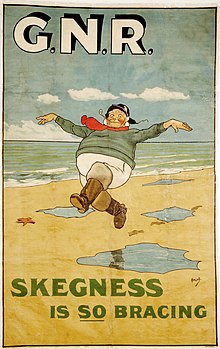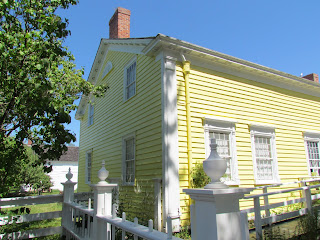This, for a lot of reasons.
Because I have kept company with la grippe for the holiday season, and have gone a bit barmy.
Because the Phillip Island International Challenge classic motorcycle races (with which himself is deeply embedded) are set to be run south of Melbourne in a bit over a month.
Because daily coverage of the terrible bush fires in Australia has my heart breaking, calling forth our short but intense visit in 2018, and the lifetime bonds it forged.
And because, in a monumental sort-out recently, I came upon the walking tour booklet
Queenscliff, a Living History. And later, the
website of Heritage Council Victoria. I have now left the building.
 |
| Queenscliff Inn 1905 |
Queenscliff was the first Australian town we visited after we left the PI track, a tiny ferry trip across Port Phillip Bay from Sorrento. And in the hot greyness, our first day together alone since the intensity of the races, we fell into Queenscliff and its history, in this 'Queen of Watering Places', elevated in the 1880s from its humble fishing village origins into a Victorian beachside resort. The general wealth-making and increasing mobility resulting from the discovery of gold in Victoria, spawned a place whose guesthouses, hotels and mansions remain, although its popularity had faded by the 1920s.

The first street we encountered, Hesse Street, was less than inspirational, although lunch at the 1905 Queenscliff Inn was refreshing and cool. A wander introduced us to the 1887 Post Office (looks more Edwardian Classical, but the guide confessed to many alterations) and the Vue Grande Hotel, which started out in 1881 as a grand Second Empire confection, rising from a 1927 fire as Spanish Mission.
 |
| Vue Grande Hotel (1927 rebuild, Mission Style) |
I'm enjoying
Life in Victorian Britain by Michael Patterson. He blames Queen Victoria (and the railway) for the democratization of holidays at the seashore. Queen Victoria was a lover of the outdoors, and her seaside retreat at
Osborne established a trend, among her subjects of all classes, for a seaside holiday.

Lodging in humble cottages, guest houses and hotels, Brits travelled the expanding railway system to Blackpool and Margate and dozens of other spots. Victorians on holiday - sensibly attired in corsets and big hats, white shirts and jackets. The only concession to holiday abandon might be a gentleman's straw boater. The bathers took to the water in bathing machines, a bizarre idea today. There's one below, restored at Osborne. Queen V's own.

It's fascinating but not surprising to see the trend playing out in Queenscliff, this very remote corner of 'the Empire.' I hope they dressed more sensibly. Queenscliff was in easy reach of Melbourne by rail by 1879, or by paddle-steamer.
I believe many of the cottages we admired were in fact permanent residences in their heyday, but give every indication of the holiday lifestyle now, with their lovely gardens and verandahs.
I found a statement of significance from the tactfully described "evolved... and not externally intact" Caribou Cottage, at 22 Gellibrand Street. It was built in the 1870s as a residence, but took a turn as commercial premises as well. Its rather over-sized classical fittings prompted this: "a highly decorated facade with a highly unusual composition, and somewhat awkward application of Classically-inspired detailing." How many cottages do you know with "vermiculated quoining", Classically inspired columns...and window architraves with keystone and projecting cornice?"
The cottages along Gellibrand Street (the sea-view neighbourhood which includes a fort) have been modernized in some instances, their details removed. This craftsman style red brick/weatherboard appeals, with its brick-walled garden, as does the dainty metal roofed Victorian with treillage verandah and white picket fence nearby.

Some overgrown empty lots hint at demolitions, as do a few unimaginative new builds. The guide recalls that a row of nine cottages were built on the street in 1853/4 by George Admans for the Colonial Government, to house sea pilots, the health officer and his crew.
 |
| classic metal clad bullnose verandah roof |
A street we did not venture onto, Stokes Street, is home to a gorgeous unspoiled 1890s streetscape of terraces and brick/weatherboard cottages - even a shop. Thanks for the return Queenscliffe
visit Google cam!
Alas, there was not time to explore further; had an arrangement with our accommodations on the Great Ocean Road.
From sublime to ridiculous, and visits to three of the seaside hotels on Gellibrand Street, The Queenscliff Hotel, The Ozone Hotel (formerly Ballieu House) and Lathamstowe.
 |
| Queenscliff Hotel c1887 |
Here's a
tour of the area courtesy of Streetview.
Imagine the street narrower, tree-shaded, strolling well-dressed pedestrians and the occasional carriage clip-clopping by and the sedate seaside holiday experience at one of these grand hotels.
The red brick Queenscliffe is "a very early and well-integrated Australian example of the English 'Queen Ann' architectural style." Cast iron balcony and verandahs, a polygonal tower with coned roof and bellcast shape, and most interestingly, the shaped Dutch gable reflecting, according to my heritage sources, northern European Renaissance style of France and the Netherlands.
The interior is said to be essentially intact. Didn't think to look.
 |
| Ozone Hotel (prev. Baillieu House) 1881-8 |
The former Ozone Hotel was built in 1881, a grand asymmetrical, two storey stucco-clad structure, with wings added in the 1880s. The so-Australian cast iron verandah and balcony, and four-storeyed tower with bellcast roof and iron cresting, announce its French Renaissance influence. A tony destination to be sure, but Queenscliff was fashionable with wealthy Victorian Victorians.

At the time of our visit in 2018, an 'executive apartment' was for sale, and today I found this
advertisement for an STA. So, with the wealth floating around out there, might we be hopeful that this high-maintenance girl has a good future?

 |
| inviting entry |
The prestigious Lathamstowe was built by a brewer, the philanthropic Edward Latham in 1882-3 as a seaside holiday home for Anglican clergy and their families. Heritage sources describe it as "a pair of Italianate residences in a duplex arrangement [identical facades on two separate streets] combined with a corner tower." There's a good photo from the corner, which I failed to get,
here (a third of the way down the page.)
Streetview also made the effort.

Another Italianate beauty in stucco covered brick. The form of the building, with two-storey semi-octagonal bays, arcaded loggias on two levels, the mansard topped tower with tripartite windows, bull's eye windows, slate roof and iron cresting, is matched by the detail. The fluted columns are of cast iron, topped with Corinthian columns.
Ontario readers will enjoy this. I've just learned that the "Italian buckthorn" hedge surrounding the hotel is listed on the Victorian Heritage Register, despite its classification as a noxious weed. (Wouldn't happen here.)

The roof is flat, designed for promenading and enjoying the sea view (the verandahs weren't enough?) Astonishingly they were clad in sheet (20 tons of it.) Water was collected and stored in underground tanks - was that a good idea?
 |
| Lathamstowe and Ozone hotels from Queenscliffe Foreshore Reserve |
Before we leave Queenscliff, here's a
link to a good post about Queenscliff history, and some great photos. Scroll to the last one to see why the town got its name.
 |
| the Needles, Isle of Wight in the short distance |
Incidentally, if you wondered at all about the title; there's a seaside holiday link I'm enjoying today, having just opened a calendar of vintage railway
posters, purchased at the National Railway Museum in York, for such a day as today.
 |
| credit: Wikipedia |
There is a treasure trove of wonderfully executed advertising posters commissioned by various British Rail lines in the 1920s and 30s, to encourage train travel to holiday destinations. Slogans like "It's Quicker by Rail" and "Skegness is so Bracing" are part of British life, and our home.
Mind you, the iconic little Jolly Fisherman
character skipping along the beach (by John Hassell, 1908) of the original GNR tourism posters (part of my man's Lincolnshire growing up days) looks dressed more suitably for our blustery April '19 family day on Mudeford beach, than for sunburn and donkey rides on the sand.







































































